Do Sunflowers Come Back Every Year? Here's What to Know
Here are the differences between the two types of cheery flowers
Whether sunflowers come back every year depends on the variety. There are annual and perennial species in the Helianthus (sunflower) genus, and if you plant a perennial variety, you'll be delighted with new sunflowers the following growing season.
Here’s what you need to know about the differences between the two varieties. And if you cannot decide which type to grow and you have the space, plant both. You can never have enough sunflowers—and pollinators and birds love them, too.
Comparison Between Annual and Perennial Sunflowers
| Annual sunflowers | Perennial sunflowers |
Regrowth the next year | From seeds dropped by the plant |
|
Bloom | Year of planting | Second year after planting |
Growth rate | Fast | Moderate |
Growth habit | Single stem with smaller side shoots | Several stems growing in a clump |
Seed heads | Small or large | Small |
Root system | Shallow string-like roots emerging from a thick main root | Deep tubers and rhizomes |
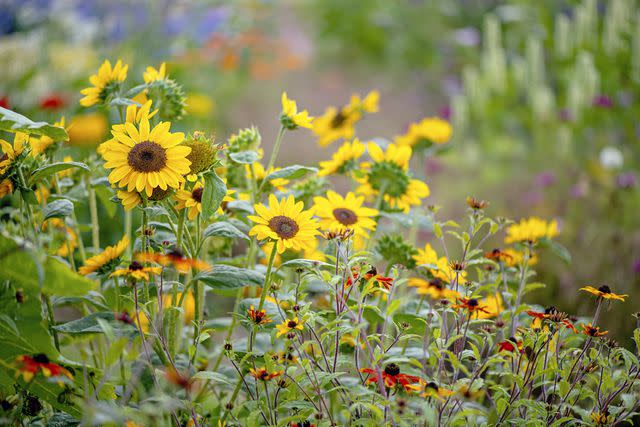
Jacky Parker Photography / Getty Images
Annual Sunflower Varieties
Annual sunflowers come in a huge variety of varieties, mostly hybrids, which means that their seeds won’t produce a plant true to type. If you want to have the same sunflowers next year, you’ll need to purchase fresh seeds from a seed company every year.
Annual sunflowers are typically planted from seed directly in the garden. They need a soil temperature of at least 60 degrees F to germinate. Usually, that temperature is reached about three weeks after the last frost date, but because spring weather is so unpredictable, it often pays off to wait a little longer.
To get a head start on the gardening season, you can also start the seeds indoors about 3 weeks before your average last frost date. Use biodegradable pots because sunflowers do not like it when their roots are disturbed. Plant them outdoors when the soil has warmed to 60 to 70 degrees and keep them well watered until they are established. Once they are established, they don’t need more than about 1 inch of water per week and even tolerate dry spells.
Popular varieties of Helianthus annuus include:
American Giant
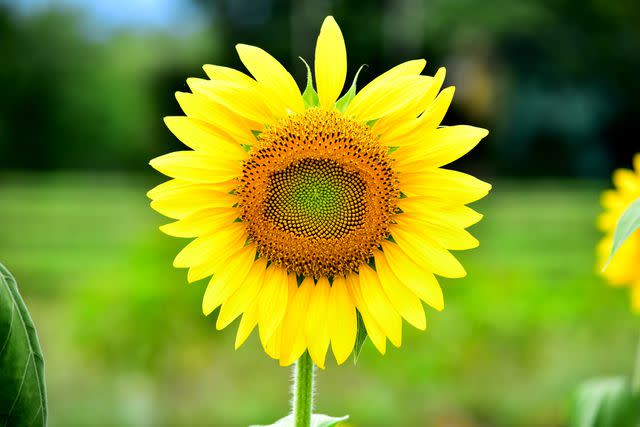
Gk005 / Getty Images
Growing up to 16 feet tall and heads up to 10 inches in diameter, this is one of the tallest annual sunflowers you can grow.
Autumn Beauty
The colors of this late-blooming variety, a mixture of warm orange, gold, yellow, burgundy, and rust make it stand out. Autumn Beauty grows up to 7 feet tall.
Dwarf Sunspot
This dwarf variety is a good choice is you want big, bright yellow heads but don’t have the space for tall sunflowers. They plants grow only 2 to 3 feet tall.
Lemon Queen
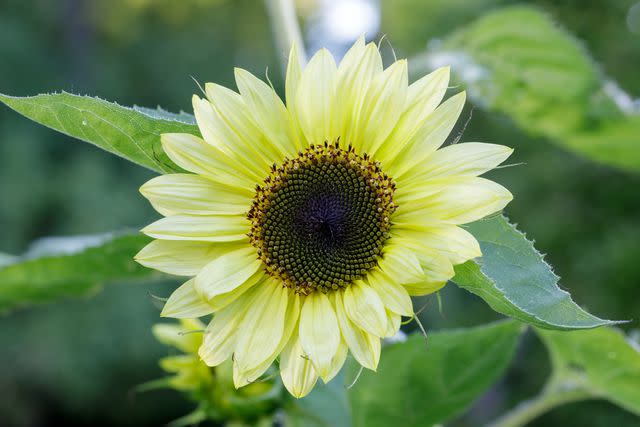
yhelfman / Getty Images
Unlike most annual sunflowers, this is an heirloom variety. Its lemon-yellow blooms with chocolate-colored centers are particularly attractive to honeybees. The plants grow 5 to 9 feet tall.
Teddy Bear
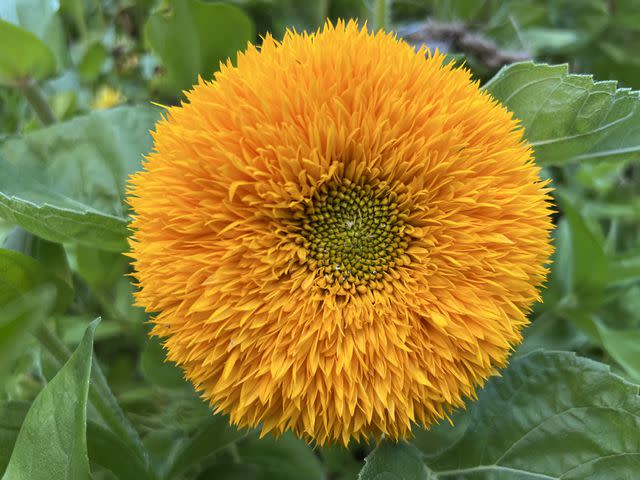
geistreiches / Getty Images
The double, deep yellow flowers of this bushy variety get their name from their cuddly look. Teddy bear sunflowers grow 2 to 4 feet high.
Perennial Sunflower Varieties
Among the more than 52 species of sunflowers, which are all native to North America and Mexico, are many perennial varieties. Planting a variety that is native to your area has the most benefits for native insect populations, biodiversity, and wildlife.
Perennial sunflowers won’t bloom until the second year but once they are established, they are low-maintenance plants. They spread either via their rhizomes, or seeds, or both so can count a blooming patch or drift of sunflowers for years to come.
Here are some popular perennial sunflower species:
Ashy Sunflower
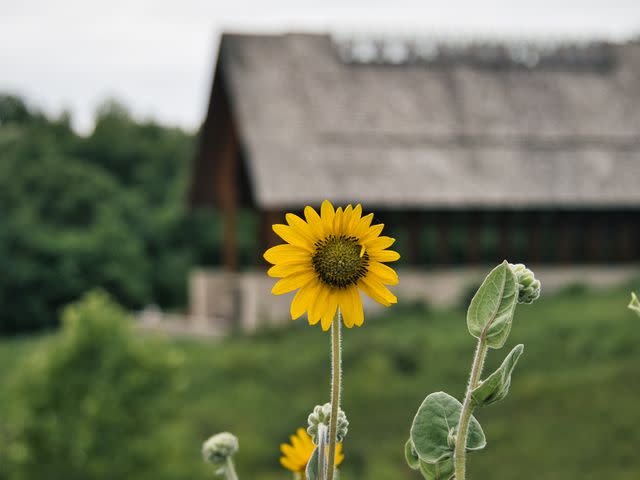
Matthew Fowler / Getty Images
With a height of 2 to 3 feet, Helianthus mollis is a compact sunflower that blooms from July through September. It is native to the central and southeastern United States. USDA zone 4-10
Giant Sunflower
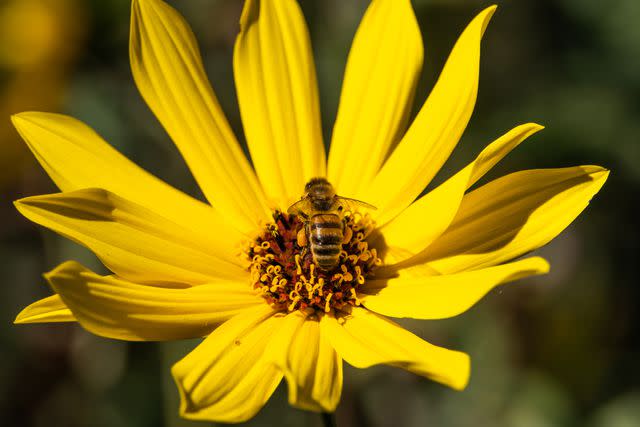
ErikAgar / Getty Images
With its height (up to 9 feet) and large, seed-filled centers, Helianthus giganteus has the closest resemblance to annual sunflowers. It is native to eastern North America. USDA zone 6-9
Maximilian Sunflower
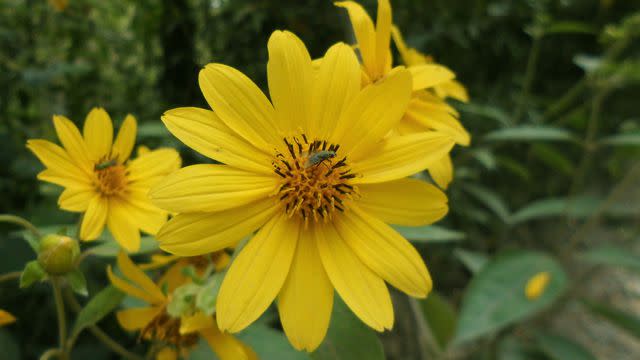
Alejandro Perez Alvares / Getty Images
The flowers of Helianthus maximiliani are paler yellow than most perennial sunflowers, but they make up for it by blooming prolifically. These prairie plants, which are native to the Great Plains, grow 3 to 10 feet tall. USDA zone 4-9
Swamp Sunflower
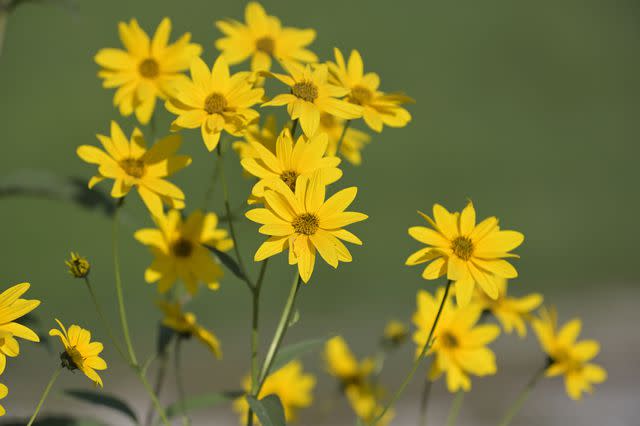
mauribo / Getty Images
Also known as narrowleaf sunflower, Helianthus angustifolius is native to the southeastern United States. It grows 6 to 9 feet tall and has bright yellow flowers. USDA zone 6-9
Western Sunflower
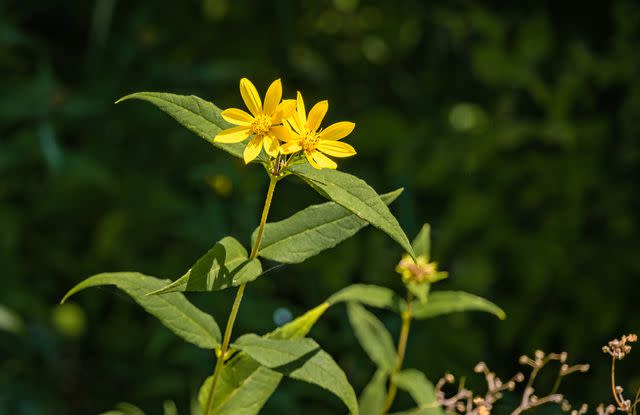
Lana2011 / Getty Images
Despite its name, western sunflower (Helianthus occidentalis), is native to the eastern and central United States. Another name for this perennial sunflower is s fewleaf sunflower. It grows 2 to 4 feet tall and blooms from mid-summer to fall. USDA zone 3-9
Read Next: When Is the Right Time to Plant Sunflowers?
Read the original article on The Spruce.

